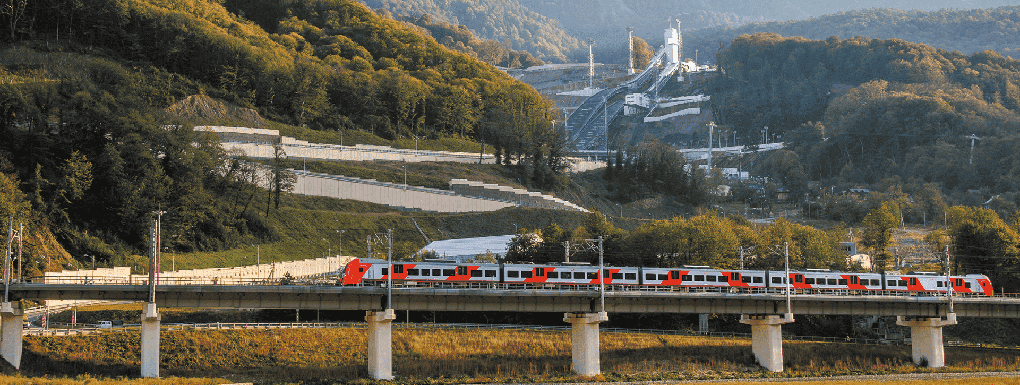Energy efficiency
Russian Railways maintains leadership in energy efficiency and environmental friendliness among global freight and passenger railway companies.
GRI 302-3
To achieve our Environmental StrategyApproved by resolution of Russian Railways’ Board of Directors dated 21 March 2025, Minutes No. 11. target in reducing carbon intensity, we take steps outlined in the Energy Strategy through 2030 with an outlook through 2035, annual Energy Savings and Energy Efficiency Programme, industry investment programmes of our branches, and programme of organisational and technical initiatives for 2020–2025Russian Railways’ Order No. 2651/r dated 27 November 2019..
Every year, the Company shapes and implements the Energy Savings and Energy Efficiency Programme, with its energy-saving initiatives taking place as part of investment programmes to upgrade fixed assets and the investment project to introduce resource saving technologies in railway transport.
In 2024, the energy-saving initiatives resulted in meeting our energy savings and energy efficiency targets.
In the reporting year, the Energy Efficiency Programme helped achieve fuel and energy savings of 5,462.6 TJ, or over RUB 6.3 bn.
A significant contribution to fuel and energy savings was made by measures to improve energy efficiency of the transportation process, with about RUB 5 bn saved as a result. These included lower electricity and diesel fuel consumption, by 540.9 m kWh and 40.6 kt respectively. The bulk of savings was achieved by improving locomotive operations (77.7%) and traffic management procedures (15.7%).
Additionally, measures to improve energy performance of traction power supply saved an additional 15.2 m kWh, which is equal to RUB 71.5 m lower costs.
Key areas in energy saving and efficiency:
improving the energy efficiency of transportation operations;
developing the power grid to reduce energy losses and make it more efficient;
using stationary and non‑traction energy more efficiently.

due to improved energy efficiency across processes and infrastructure
due to improved performance across thermal generation facilities and heating systems
due to the introduction of LED devices, energy‑efficient lighting fixtures, optimisation of the lighting operation patterns at the station railyards, terminals, technical and administrative buildings, and warehouses
Despite the challenging macroeconomic situation, Russian Railways, in cooperation with machine builders, completed development of the hybrid shunter EMKA2 featuring domestic lithium-ion batteries and an asynchronous traction drive. Now EMKA2 shunters are being tested in operation at railway stations of the Moscow Transport Hub.
| Target | Unit of measurement | Performance against targets | |||
|---|---|---|---|---|---|
| 2023 | 2024 | ||||
| Plan | Actual | Plan | ActualRebased to 2023. | ||
| Reduction in the energy intensity of operations | % | –0.6 | –0.6 | –0.7 | –0.7 |
| Energy efficiency improvement | % | 0.6 | 0.6 | 0.7 | 0.7 |

